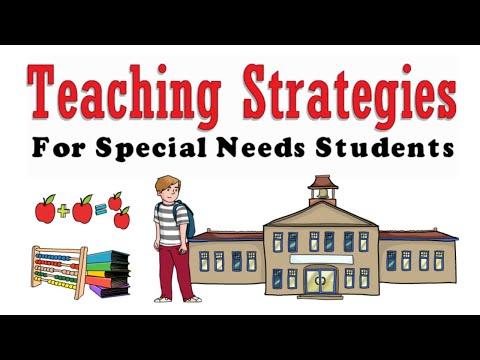SEL for Students with Special Needs: Effective Strategies for Inclusive Learning
In today’s diverse classrooms, creating inclusive learning environments that cater to every student’s unique needs is essential. Social Emotional Learning (SEL) for students with special needs not only promotes academic achievement but also empowers learners with critical life skills. In this comprehensive guide, we’ll explore practical strategies, proven benefits, and actionable tips for implementing SEL in special education settings to foster positive outcomes for all students.
Understanding SEL: What is Social Emotional Learning?
Social Emotional Learning (SEL) is an educational approach that focuses on helping children and adolescents develop essential social, emotional, and behavioral skills. Key SEL skills include:
- Self-awareness
- Self-management
- Social awareness
- Relationship skills
- Responsible decision-making
For students with special needs, building these competencies may require individualized strategies that address specific challenges and leverage unique strengths.
Why SEL is Crucial for Students with Special Needs
SEL provides students with disabilities a strong foundation for personal and academic growth. The benefits of SEL for students with special needs include:
- Improved self-esteem: Helps students recognize and celebrate their abilities.
- Better emotional regulation: Supports management of frustration and anxiety in learning environments.
- Enhanced dialogue skills: Fosters better interactions with peers and teachers.
- Increased academic engagement: Promotes motivation and participation in inclusive settings.
- Greater empathy and understanding: Encourages positive relationships among all classmates.
SEL acts as a bridge, enabling students with special needs to achieve their fullest potential both in and outside the classroom.
Effective Strategies for Implementing SEL in Inclusive Classrooms
To ensure triumphant SEL for students with special needs, educators should adopt targeted strategies that embrace differentiation, accessibility, and inclusivity.
1. Individualized SEL Plans
- Incorporate SEL goals into students’ Individualized Education Programs (IEPs).
- Work closely with special educators,counselors,and therapists to tailor strategies to each student’s needs.
-
Regularly monitor progress and adapt interventions as required.
2. Visual Supports and Social Stories
-
Use visuals, such as picture cards and posters, to illustrate emotions, expected behaviors, and social cues.
-
Integrate social stories to help students understand complex situations and appropriate behaviors.
3. explicitly Teach and Model SEL Skills
-
Incorporate direct SEL instruction into daily lessons,using clear language and structured routines.
-
Model emotional regulation and social problem-solving for students to observe and emulate.
4. Leverage Technology and Assistive Tools
-
Utilize apps and digital platforms that offer interactive SEL activities tailored for diverse learners.
-
Employ communication aids like visual schedules and speech-generating devices to facilitate participation.
5.Promote Peer Support and Cooperative Learning
-
Encourage peer mentoring and group activities that foster social interaction and empathy.
-
Design cooperative projects that build strengths-based teams and celebrate inclusion.
6. Foster a Trauma-Informed Classroom Habitat
-
Create safe, predictable, and nurturing environments sensitive to students’ histories and emotional triggers.
-
Provide consistent routines and offer positive reinforcement to enhance a sense of security.
practical Tips for Educators and Support Staff
Implementing SEL for students with special needs requires commitment and creativity. Hear are actionable tips to make a difference:
- Use Positive Language: Focus on strengths and describe desired behaviors in constructive terms.
- Schedule Regular SEL Check-ins: Start each day or lesson with a brief emotional check-in.
- adapt Activities: modify group tasks and materials to ensure full participation for all learners.
- Encourage Family Involvement: Engage families by sharing SEL activities and home strategies.
- provide Sensory Breaks: Incorporate movement, mindfulness, or quiet spaces to help with self-regulation.
- Celebrate Successes: Recognize every step of progress to boost motivation and confidence.
Firsthand Experience: SEL in Action
“As a special education teacher,integrating SEL into our daily routines transformed my classroom. One student with autism struggled with transitions, but through role-play, visuals, and breathing exercises, she began expressing her emotions more confidently and formed new friendships. Our inclusive approach benefited every student,not just those with IEPs.”
– Emily R.,Special Educator
Such testimonies highlight the tangible impact of SEL when adapted intentionally for students with disabilities.
Case Study: Improving Communication Skills through SEL
Background
At Lincoln Elementary, the inclusive third-grade classroom introduced a weekly SEL session focusing on communication and relationship-building. Two students with speech delays had previously struggled to participate in group work.
Approach
- Used visual scripts to cue social interactions.
- Paired students with patient buddies for structured games.
- Celebrated non-verbal progress, like eye contact or listening posts.
Outcome
Both students began initiating conversations, demonstrated growth in self-advocacy, and became integral members of peer groups. Teachers reported an overall increase in classroom empathy and inclusiveness.
Engaging parents and Caregivers in SEL
Parental involvement is crucial for reinforcing SEL skills outside the classroom. Schools can:
- Offer SEL workshops for families of students with special needs.
- Share resources for home-based SEL activities and routines.
- Encourage consistent communication between teachers and parents.
together, caregivers and educators can provide a holistic support system for every child’s social and emotional development.
Conclusion: The Path Forward for Inclusive SEL
implementing SEL for students with special needs is a transformative journey that requires intention, patience, and collaboration. By utilizing individualized strategies, embracing diversity, and fostering a culture of empathy, educators can help every student build resilience, develop meaningful relationships, and thrive in inclusive communities. When SEL is truly accessible, no child is left behind—every student is empowered to grow, connect, and succeed, both in school and beyond.
For more guidance on effective SEL strategies and creating inclusive classrooms, explore our other resources or connect with special education experts in your community.

